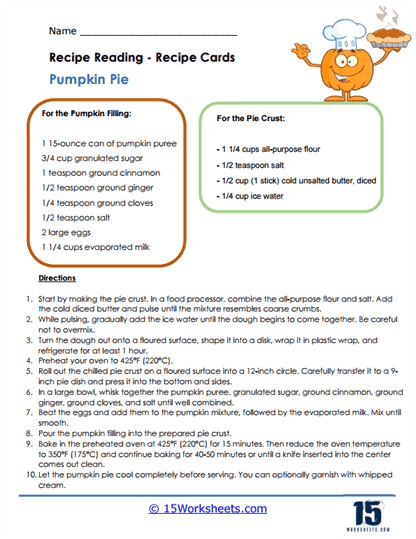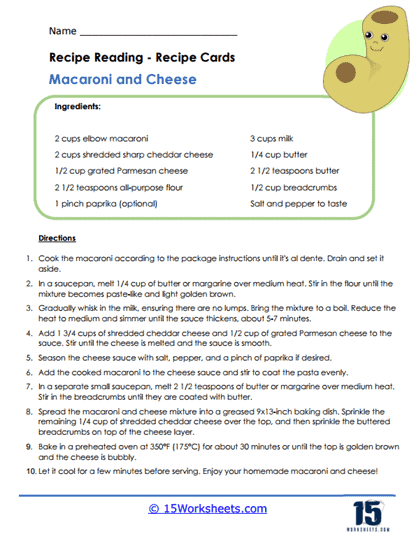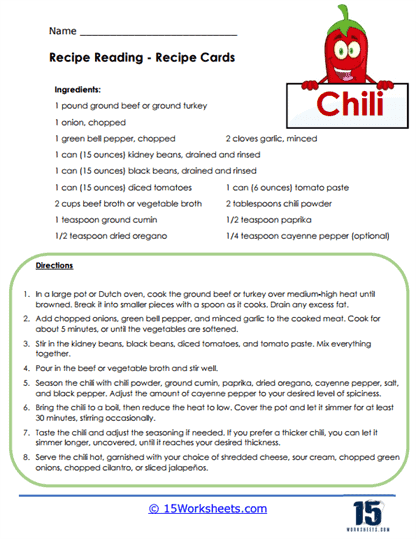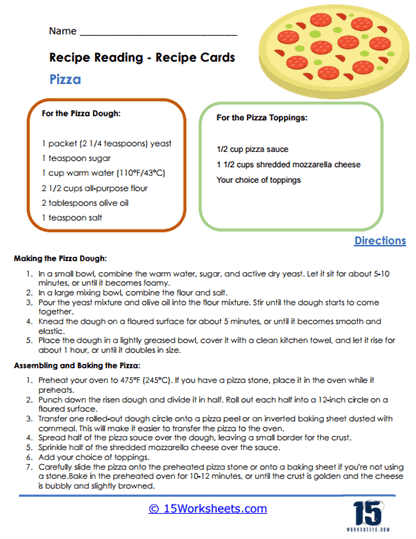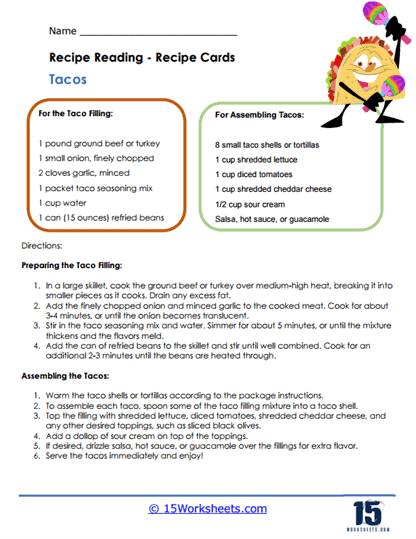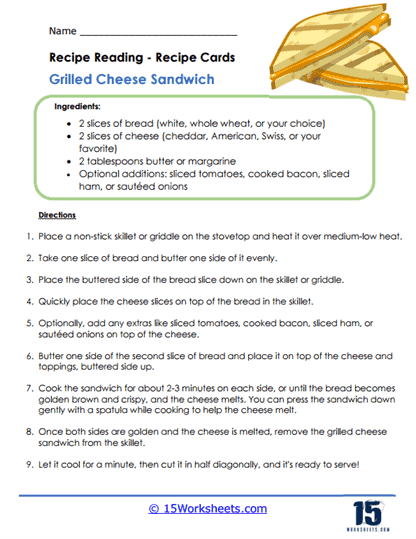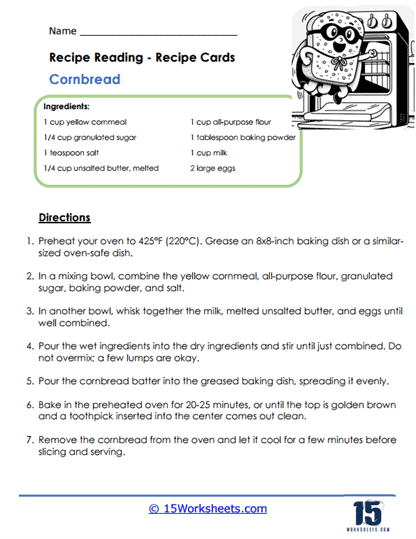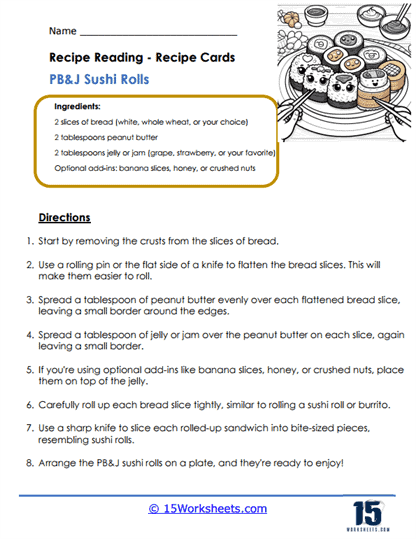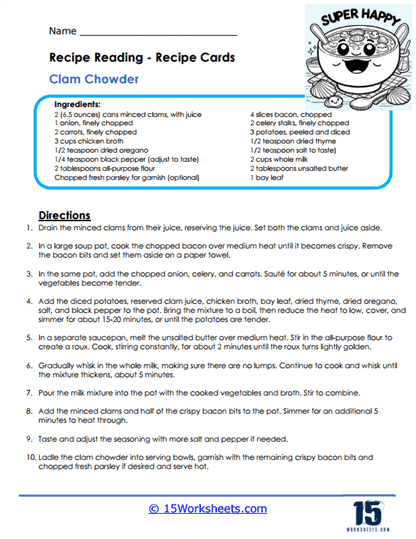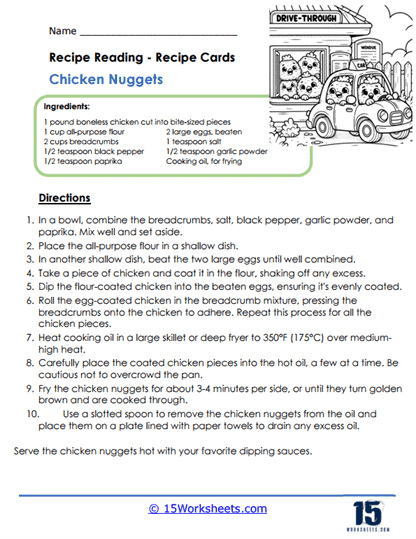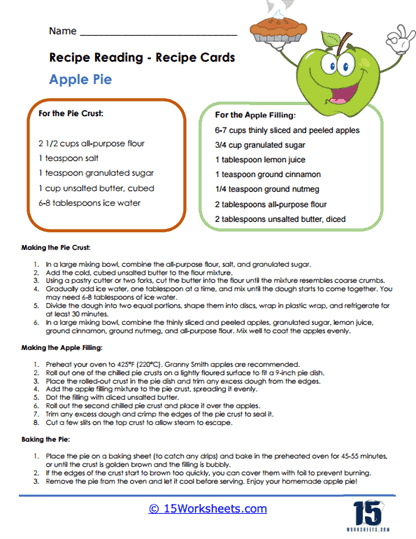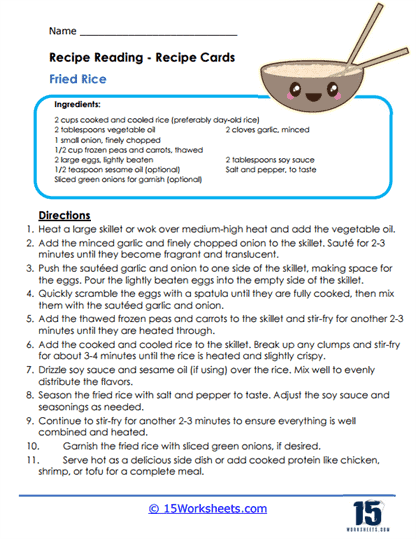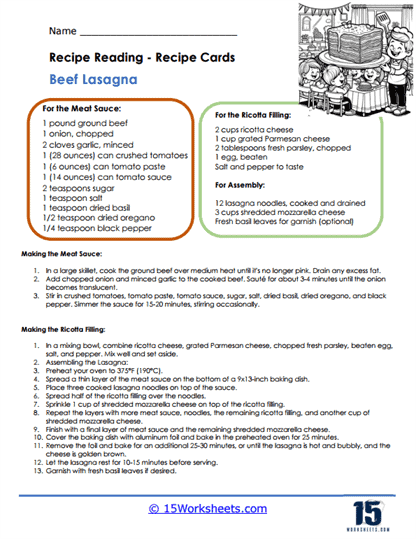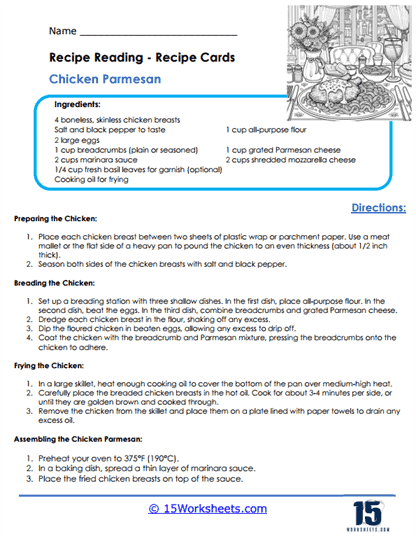Reading a Recipe Worksheets
About These 15 Worksheets
These worksheets are an essential component of home economics and culinary education, helping students develop the skills needed to follow a recipe successfully, which is a practical and valuable life skill. The primary goal of these worksheets is to familiarize students with the structure and language of recipes. Recipes are more than just a list of ingredients; they are a set of instructions that require a specific order of operations, understanding of measurements, and knowledge of cooking techniques. By using these worksheets, students learn to decipher this information, which is crucial for successful cooking.
Types of Exercises
Ingredient Identification – Exercises often begin with identifying ingredients listed in a recipe. This not only helps students familiarize themselves with various ingredients but also teaches them about measuring units and alternative ingredient options.
Measurement Conversion – These exercises teach students how to convert measurements, such as cups to tablespoons or grams to ounces. Understanding conversions is vital for adjusting recipes based on the number of servings or ingredient availability.
Sequencing Steps – Students are asked to arrange the steps of a recipe in the correct order. This exercise enhances their understanding of the cooking process and the importance of following steps sequentially for a desired outcome.
Vocabulary Building – Recipes often include specific culinary terms (e.g., sauté, simmer, fold). Worksheets may include exercises that define these terms or ask students to match terms with their definitions.
Nutritional Analysis – Some worksheets incorporate exercises that require students to analyze the nutritional content of a recipe. This promotes an understanding of healthy eating habits.
Recipe Modification – Exercises may ask students to modify a recipe, such as making it vegetarian or reducing its sugar content. This encourages creativity and adaptability in cooking.
Time Management – Students learn to estimate the total time required for a recipe, including preparation and cooking times. This is crucial for effective kitchen management.
Understanding Kitchen Safety – Safety is paramount in cooking. Worksheets often include questions related to kitchen safety, such as identifying potential hazards or safe food handling practices.
Cultural Context – Some worksheets might include exercises that discuss the cultural background of certain dishes, fostering an appreciation for culinary diversity.
The Benefits of These Worksheets
Development of Life Skills – Cooking is a fundamental life skill that holds a significant place in a person’s journey towards independence. These worksheets play a pivotal role in preparing students not only for success in the kitchen but for an independent life where they can nourish themselves and others. Beyond just teaching them how to prepare meals, these worksheets instill valuable life skills that extend far beyond the kitchen.
Enhanced Reading Comprehension and Math Skills – The process of cooking involves following instructions and understanding the science behind various culinary techniques. Regular practice with these worksheets enhances students’ reading comprehension, particularly when it comes to deciphering instructional texts like recipes. Furthermore, it strengthens their mathematical skills as they engage in measurement conversions, adjust quantities, and work with fractions – all essential aspects of cooking. These skills are not only beneficial in the kitchen but also in various academic and real-life situations.
Cultivation of Healthy Eating Habits – Beyond the mechanical aspects of cooking, understanding recipes enables students to make informed decisions about what they eat. By learning about the ingredients and their nutritional value, students can make healthier food choices, ultimately leading to improved overall health. This knowledge extends beyond the kitchen, positively influencing their dietary habits throughout their lives.
Promotion of Cultural Awareness and Diversity – Cooking encompasses a rich tapestry of global cuisines. These worksheets expose students to a variety of recipes from different cultures, broadening their culinary horizons and fostering cultural awareness and appreciation. This not only makes students more culturally sensitive but also encourages them to explore and appreciate the world’s diverse culinary traditions.
Development of Organizational Skills – Cooking isn’t just about following a recipe; it’s about careful planning and organization. These worksheets teach students how to manage their time, prepare ingredients in advance, and coordinate various cooking tasks effectively. These organizational skills are not only useful in the kitchen but are transferable to many other aspects of life, such as work, academics, and personal projects.
Enhancement of Problem-Solving and Critical Thinking – The kitchen often presents unexpected challenges, from missing ingredients to equipment malfunctions. When students encounter such obstacles while using these worksheets, they are encouraged to think critically and solve problems creatively. Modifying recipes or finding substitutes for missing ingredients not only makes them better cooks but also hones their problem-solving skills, which are invaluable in everyday life.
Fostering Independence and Confidence – The ability to cook for oneself is a significant milestone on the path to independence. As students gain proficiency in the kitchen through these worksheets, they become more self-reliant and self-sufficient. The success they experience while cooking builds confidence, which can spill over into other aspects of life, from taking on new challenges to making informed decisions. This boost in self-esteem can have a profound impact on their overall well-being and future endeavors.

